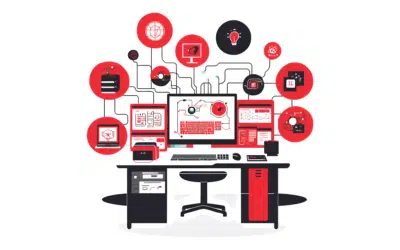Eighty-six (68) percent of managers rate teamwork as an important soft skill in the workplace. Still, 39% of employees say people in their organization don’t collaborate enough.
What gives?
Collaboration provides your company with multiple benefits. As a team, you can align your goals and work together toward a common business vision.
Here are three ways to improve collaboration in your workplace.
1. Improve the Design of Your Office for Better Collaboration
Collaborative office spaces promote cooperation and teamwork. All the big brands use design features to encourage interactions between employees. Take Google’s campus in Mountain View, California, for example, which is designed to facilitate communication.
Large open-plan offices and collaborative tools create a sense of community, and staff can exchange ideas and discuss projects.
Facebook’s headquarters in Menlo Park, California, features the biggest open office in the world. At Samsung’s base in South Korea, employees communicate in large outdoor spaces.
While you (probably) won’t have a design budget the size of Google’s, you can make a few quick adjustments to your workplace that foster better collaboration. Common areas, open-plan spaces and large workspaces encourage employee interactions and are much more effective than cramped, confined offices.
2. Use Collaboration Software
Collaboration software instantly improves communication. These programs let your staff access information in one place and share valuable data with other employees from their desk or in meetings.
You can create workflows, sync data from multiple programs, and share documents and resources with a click of a button or swipe of a finger. In short, you can streamline your business collaboration projects and simplify IT management without breaking a sweat.
Research from the McKinsey Global Institute (MGI) shows that social technologies like collaboration software improves the productivity of high-skill knowledge workers, such as managers and professionals, by as much as 25 percent.
“Companies will go on developing ways to reach consumers through social technologies and gathering insights for product development, marketing, and customer service,” MGI says.
Not all collaborative tools are created equal, though. Cisco Spark is advanced, easy-to-use software that lets users create ideas and discuss projects on a digital whiteboard. Think of it as the ultimate collaboration device that incorporates team messaging, video calling and interactive drawing.
3. Organize Social Events
Social events are vital to productivity and workplace happiness, according to experts. You can use these events as team building exercises where employees meet new people and learn skills.
This can have a positive impact on workplace collaboration, too. Social events build trust and reduce conflict, resulting in better communication in the office. Whether it’s a trip to the movie theater or a day out in the park, social events will provide your employees with plenty of perks.
Alternatively, organize a company retreat that incorporates work and fun. It might sound expensive, but it could provide you with a worthwhile, long-term investment.
“Your company retreat could be the only time all year that your employees will all be together in person,” says software company founder Brandon Bruce, writing for Forbes magazine. “There will be a lot of handshakes, hugs and laughs. This unstructured social time is important so that your employees can get to know each other as people outside of work.”








